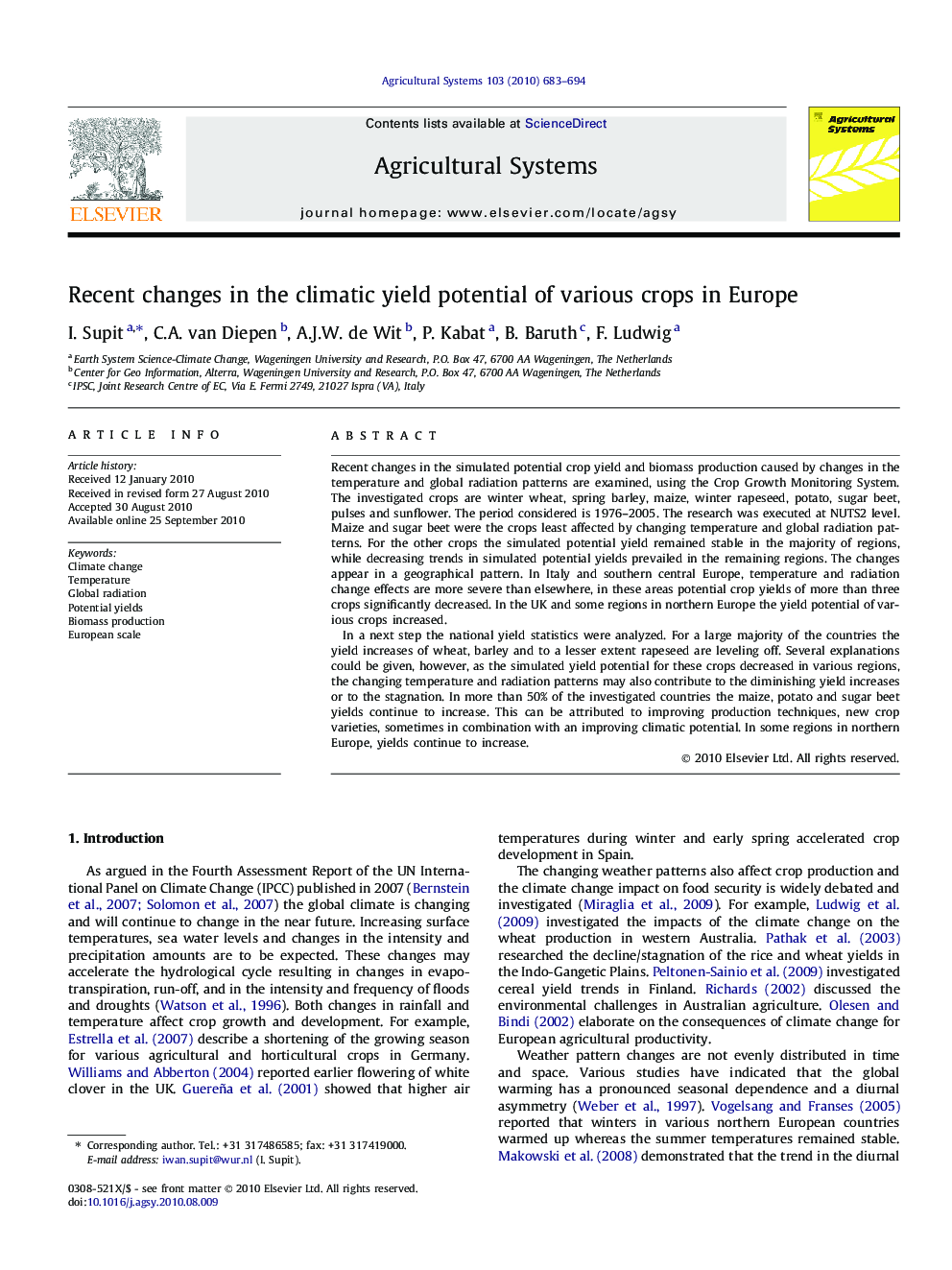| کد مقاله | کد نشریه | سال انتشار | مقاله انگلیسی | نسخه تمام متن |
|---|---|---|---|---|
| 4491539 | 1317860 | 2010 | 12 صفحه PDF | دانلود رایگان |

Recent changes in the simulated potential crop yield and biomass production caused by changes in the temperature and global radiation patterns are examined, using the Crop Growth Monitoring System. The investigated crops are winter wheat, spring barley, maize, winter rapeseed, potato, sugar beet, pulses and sunflower. The period considered is 1976–2005. The research was executed at NUTS2 level. Maize and sugar beet were the crops least affected by changing temperature and global radiation patterns. For the other crops the simulated potential yield remained stable in the majority of regions, while decreasing trends in simulated potential yields prevailed in the remaining regions. The changes appear in a geographical pattern. In Italy and southern central Europe, temperature and radiation change effects are more severe than elsewhere, in these areas potential crop yields of more than three crops significantly decreased. In the UK and some regions in northern Europe the yield potential of various crops increased.In a next step the national yield statistics were analyzed. For a large majority of the countries the yield increases of wheat, barley and to a lesser extent rapeseed are leveling off. Several explanations could be given, however, as the simulated yield potential for these crops decreased in various regions, the changing temperature and radiation patterns may also contribute to the diminishing yield increases or to the stagnation. In more than 50% of the investigated countries the maize, potato and sugar beet yields continue to increase. This can be attributed to improving production techniques, new crop varieties, sometimes in combination with an improving climatic potential. In some regions in northern Europe, yields continue to increase.
Research highlights
► In western Europe the potential crop yields are least affected by the changing temperature and radiation patterns.
► Maize and sugar beet are the least affected.
► It may be plausible that the changing temperature and radiation patterns contribute to the diminishing yield increases or to the stagnation as observed in the statistical yields.
► The increasing CO2 levels may reduce the negative effects of the changing temperature.
Journal: Agricultural Systems - Volume 103, Issue 9, November 2010, Pages 683–694